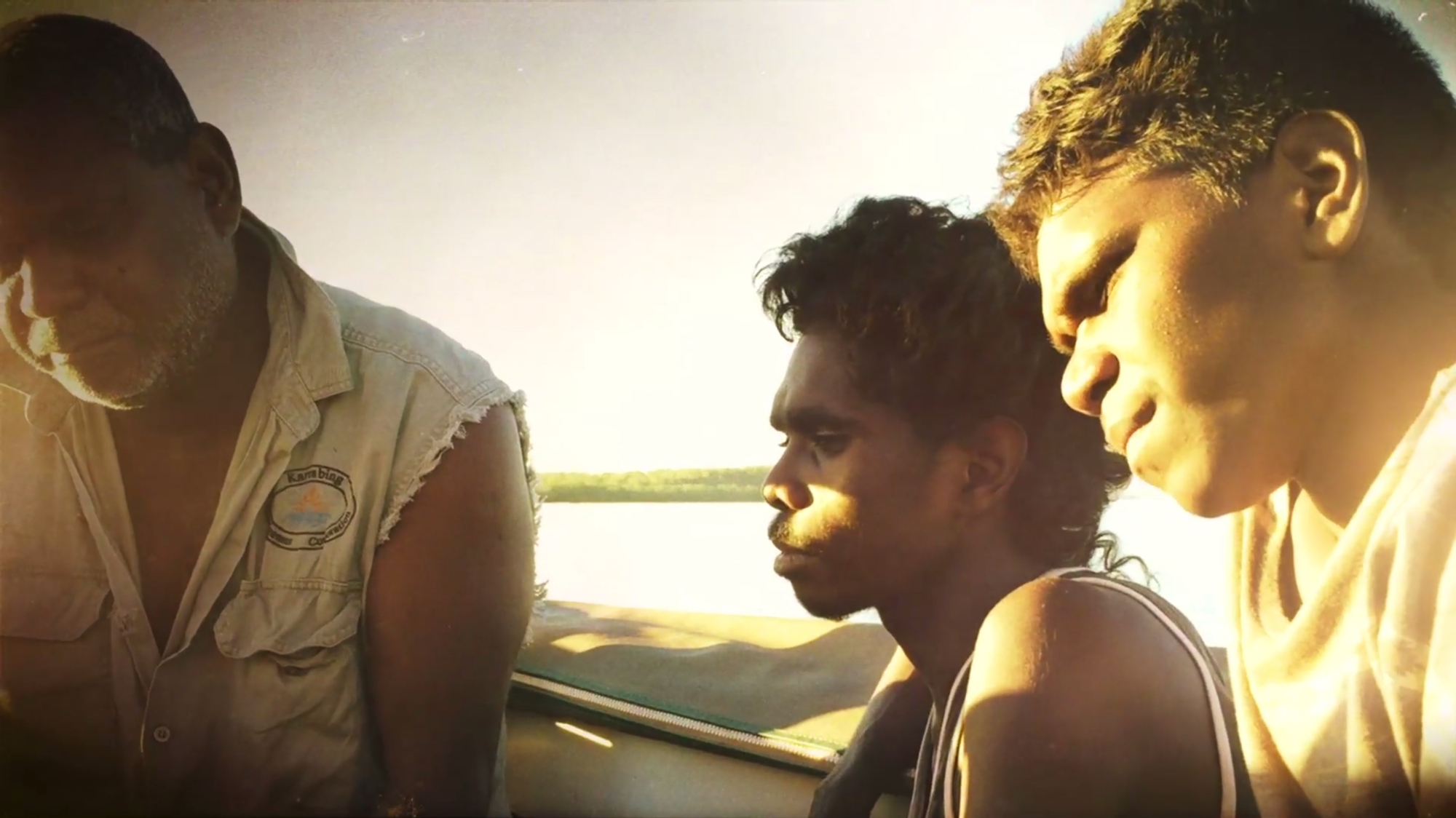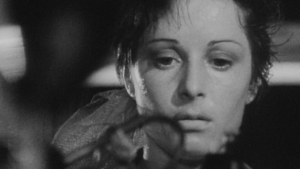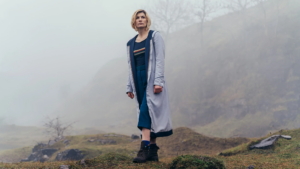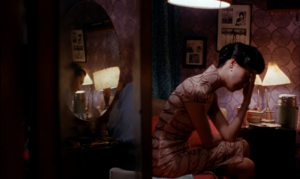Away from the red carpet and box-office queues that busy Potsdamer Platz is the Akademie der Künste, which plays host to the festival’s most avant-garde program, Forum Expanded. This year, the line-up featured a total of forty-four works from twenty-one countries, including fifteen installations and a one-day conference on archives. The installations ranged anywhere from eight to seventy-five minutes in duration across single- and multi-screen formats. As it would take more than six hours to watch the installations in their entirety, the placement of each work within the physical space is crucial; the attention of even the most diehard avant-garde enthusiast would wane after several hours of engaging with politically provocative works. For the casual and the curious, then, the work that occupies the very first screen upon entry carries the greatest urgency. This year, that initial – and largest – screen in the gallery showcased Wutharr, Saltwater Dreams, a 2016 single-channel video installation from Australia’s Karrabing Film Collective.
Established in 2008, the Karrabing Indigenous Corporation – the collective’s parent organisation – is an Indigenous arts and screen group whose practice is founded on self-organisation and social analysis. Through stunning experimental approaches, its work asks questions regarding the causes of the corrosion of Indigenous life and the imposing inequity that results from colonialism and its neo-imperialist echoes. With its unique approach to temporal storytelling, the Karrabing Film Collective creates art that fits aesthetically with the avant-garde, without necessarily setting out to adhere to the movement’s underpinning motivations. Yet the collective’s goal is not so much to produce polemics that set the political agenda; rather, its work embodies cultural resistance to dominant modes of oppression through artistic expression.
The collective’s central aims are to record Indigenous cultures and to tell their stories. Self-organisation is at the heart of their projects’ social impact. Karrabing does not receive any formal funding, relying instead on private investment raised by founding member and Columbia University academic Elizabeth A Povinelli. Though both white and a national outsider, Povinelli is instrumental in facilitating access to funds and equipment with which to produce the collective’s work. Her involvement is also key in ensuring the collective is able to exhibit its creations and travel with them. This year, two Karrabing members were able to obtain their Australian passports to travel to Berlin and present at the festival’s day conference, entitled Archival Constellations.
What made Karrabing attractive for Berlinale, as revealed at the conference, was its position as a unique archive exemplar. While, in traditional terms, an archive engages with the preservation, curation and exhibition of materials, Karrabing’s chief approach is creation and, in this way, as a member of the collective was keen to point out, the archive is not in the past, nor is it limited by time – ‘our archive is on our land’. In large part, an Indigenous archive cannot exist: having had their cultures, lands and offspring stolen, Indigenous peoples’ only avenue for recording a history that can persist in perpetuity is invention.
Wutharr, Saltwater Dreams is a story with multiple narrators. The multiplicity does not intend to disrupt or discredit any one of the storytellers as unreliable; instead, it is a device with which to tell manifold stories. Moreover, through the repeated recounting of one story – what caused the motor on their boat to break down – a new, enriched and interwoven narrative emerges. One especially resonant theme in the work is the relationship between active communities and the ancestry of their family members, as well as to the physical land. The subjects, having failed to visit their ancestors for a long time, return to find the spirits of their ancestors present, playing tricks on them and punishing them for not visiting sooner. Here, the work appropriates the aesthetic of the avant-garde through an expression of temporal collapse: it refuses to present time in linear progression. It is, in some way, cyclical – but it is also layered, the story finishing only to begin again, as told by someone new. In direct correlation with the storytelling, images are superimposed onto one another. Thus, the present (storytelling) is always fixed to the past (the tale itself). It is through this unique form of narrative that Karrabing has created an active archive.
Filmmaking is both a mode of archiving and a political act. Whereas histories were once passed down verbally, they can now be newly born, focusing on the multiplicity of perspectives and ensuring fair self-representation. While there is not necessarily any fairness in the past events themselves, there is a wonderfully empowering quality inherent in Karrabing’s form of archiving. Wutharr, Saltwater Dreams is not just a work of art; it is also a new entry into the living archive of cultures and peoples that history has denied.





